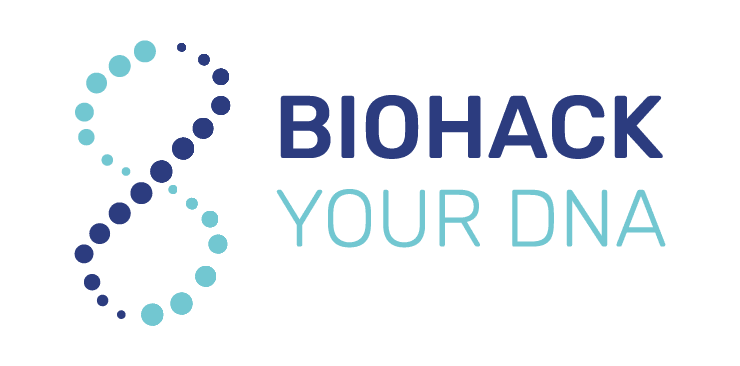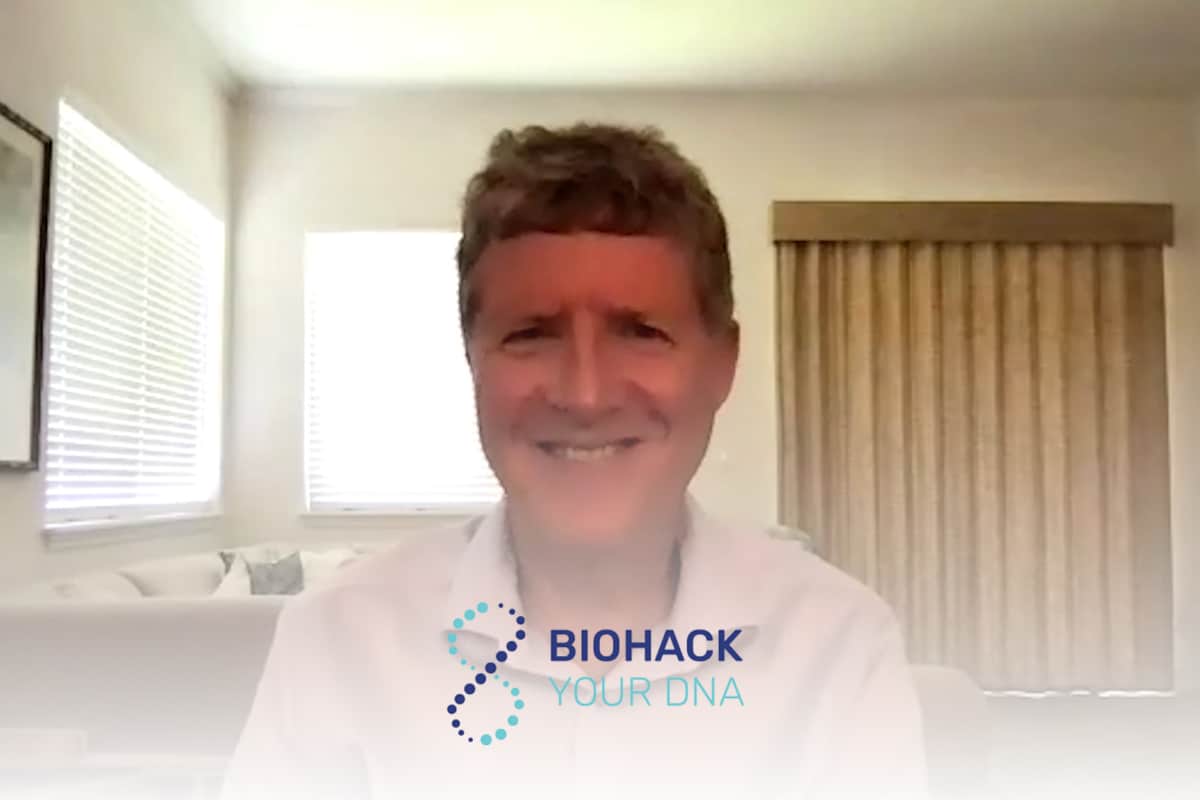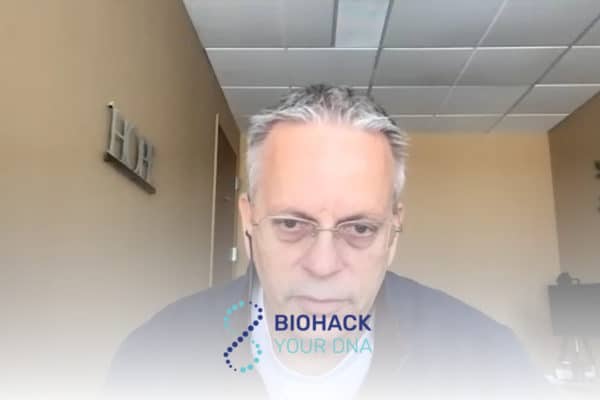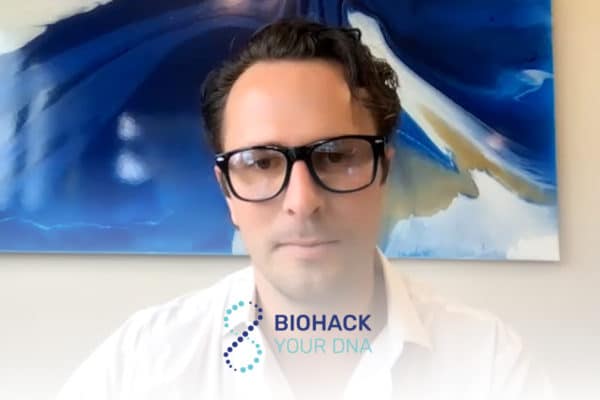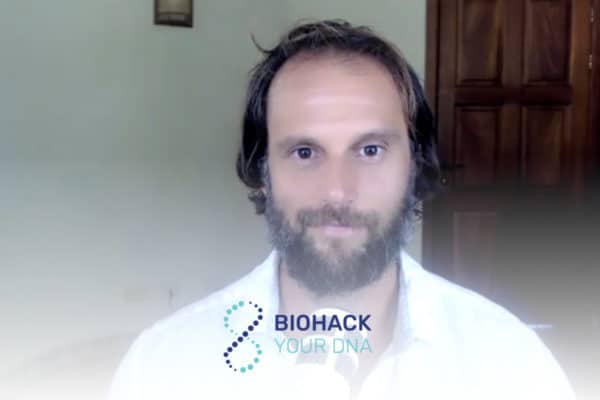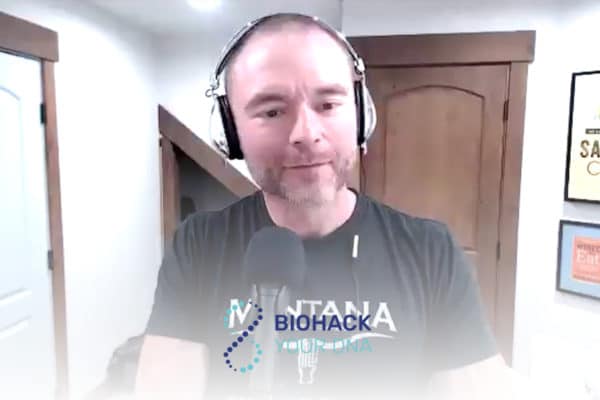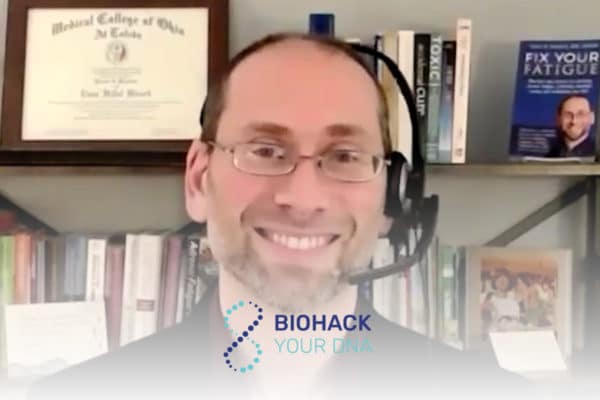Join the discussion below
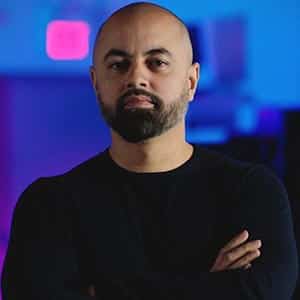
Kashif Khan is the Chief Executive Officer and Founder of The DNA Company, where personalized medicine is being pioneered through unique insights into the human genome. With the largest study of its kind globally, The DNA Company has developed a functional approach to genomic interpretation overlaying environment, nutrition, and lifestyle... Read More
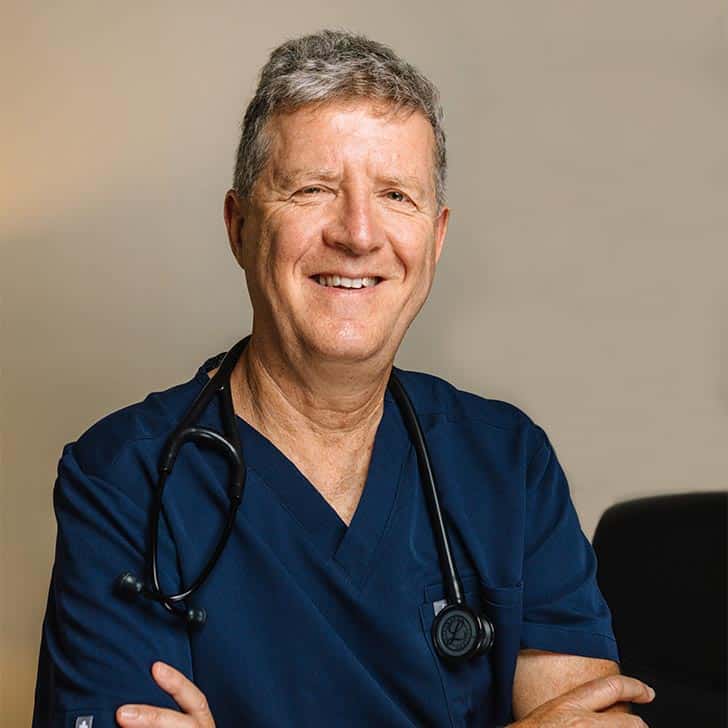
Isaac Eliaz, MD, MS, LAc has been a pioneer in the field of integrative medicine since the early 1980s, with a focus on cancer, immune health, detoxification and mind-body medicine. He is a respected formulator, clinician, researcher, author and educator, and a life-long student and practitioner of Buddhist meditation. With... Read More
In this video, Kashif Khan interviews Dr. Isaac Eliaz about his book “The Survival Paradox.”
Dr. Eliaz offers a fresh perspective on the innate survival drive in every cell of our bodies. He explains how our response to this drive can lead to inflammation or fibrosis and introduces the concept of galectin-3, a protein that plays a key role in chronic and acute diseases. Dr. Eliaz emphasizes the importance of understanding the survival paradox and provides practical strategies for changing our survival drive and bio-hacking our DNA. He also discusses multi-generational healing, “inflammaging,” and the use of modified citrus pectin to fight cancer.
Finally, Dr. Eliaz discusses the impact of scars on our physical, emotional, and psychological well-being and offers insights into reducing their size through neurotherapy and procaine injections. Overall, “The Survival Paradox” offers a new understanding of the root causes of chronic and acute diseases and provides actionable steps for achieving optimal health.
Takeaways:
- The book “The Survival Paradox” offers a fresh perspective on the innate survival drive that resides in every cell of our bodies.
- Our response to this survival drive can lead to either inflammation or fibrosis, and galectin-3, a survival protein, plays a crucial role in driving chronic and acute diseases.
- Our choices, including our emotions, psychology, and interactions with the environment, can influence our genetic and epigenetic expression.
- Creating space and connecting with our hearts can help us let go and effect meaningful change.
- Multi-generational healing and “inflammaging” are important topics discussed in the interview, focusing on the role of galectin-3 in creating an extracellular environment that leads to metabolic and fibrotic diseases.
- Modified citrus pectin can block galectin-3 and activate the body’s innate immune system to fight cancer.
- “Scars of survival” can impact us physically, emotionally, psychologically, and even across generations, and Neurotherapy and procaine injections can reduce the size of scars.
- “The Survival Paradox” offers practical strategies for changing our genetic expression and achieving optimal health.
Kashif Khan
All right, everyone. We are joined by Dr. Eliaz. I have to admit that a lot of stuff gets sent to me to read, and I don’t get to read a lot of it, but there’s a book that was positioned as something that’s game changing, and was recommended by so many people that I thought, okay, I gotta take a look at this. And when I started to read, I couldn’t put it down. The cool thing is today we have the author with us. Dr. Eliaz is joining us and we’re gonna learn some really interesting stuff about inflammation. Some things that you probably haven’t heard before. First of all, thank you for joining us.
Isaac Eliaz, M.D., MS, Lac
Thank you for the opportunity. It’s such an important topic, the topic of the summit. So, I’m so glad to be part of it.
Kashif Khan
Oh, thank you. It’s a pleasure. And your book, so first of all, just so everyone knows, it’s called “The Survival Paradox”. A lot of people are talking about it. There’s a lot of a acclaim, for everyone from health providers down to general public that just wants to heal themselves are saying great things. What does survival paradox mean? What sort of drove you to write this book?
Isaac Eliaz, M.D., MS, Lac
This book is really a culmination of a long journey. It was actually supposed to be the second book. I know I’m in my early 60s and I finally decided to write a book. I started my healing journey when I was 15. Started meditating, I lived in Korea. My father was a civil engineer. And I learned TaeKwonDo in Korea, got to practice with the national team because I needed actually learn English. And that’s why I started my path with yoga, with martial arts and with meditation. So when I went to medical school at the age 21 in Israel, I knew that I’m gonna do integrative medicine and holistic medicine. So I finished medical school. I got trained in Chinese medicine and I did a master of science in Chinese medicine. So I started integrative medicine vertically. I’m a licensed acupuncturist. I’m trained in a classical homeopathy. I’m a healer, hands-on healer, but I also had the opportunity to go through a very rigorous and long training in Tibetan Buddhism for decades. So I spent 20 years, with two months a year, in the mountains by myself.
Kashif Khan
Oh wow.
Isaac Eliaz, M.D., MS, LacEliaz, M.D., MS, Lac
And 10 years with half a day retreat. And the same time, I’m a clinician who specializes in integrative oncology and in how to cure diseases. And I’m also, I would say, a bonafide researcher. I’ve published paper with Harvard. I just got my second, very large NIH grant to study the survival protein galectin-3 in sepsis. So this journey of decades and my journey into meditation and healing in one end being a hands-on clinician, being an innovator and being a researcher, I realize that I can really explain this complex. I also had the opportunity to train for decades in Buddhism. And I spent 20 years taking about two months a year to meditate by myself in the mountains. About 10 years, I meditated half a day and worked half day. So this integration of my experience and my inner journey with meditation and its expression for me in healing, being a clinician, a hands-on clinician and being a researcher brought me to this understanding that is expressed in the term, the survival paradox. And the survival paradox is a paradigm shift.
And the reason is that we know in integrative medicine well that inflammation drives every chronic and acute disease. The Western medicine with the COVID and with the cytokine storm is recognizing it now. But inflammation is really not the cause. Inflammation is the expression. The cause is our survival drive. So our survival drive is innate in us. That’s why you are alive, that’s why I’m alive. That’s why genetically we survive. That’s why epigenetically we survive. And the paradox is that when we go into a survival mode and we all go into a survival mode all the time, because it’s innate, because it’s multi-generational, because it’s present in every cell in our body, it’s automated and it comes on through the autonomic nervous system in a fraction of a second as we know, we either fight causing inflammation or we retreat. We hide and run away and then we hide. We create isolation and we create fibrosis. And when we isolate, in the body, we create areas that are no longer connected with the body, areas of micro-environment where disease can flourish.
Now on a biochemical level, we also respond within minutes and the protein that drives the process, the alarming protein that I’ve been researching for almost 30 years is called galectin-3. And galectin-3 through this imbalanced survival response through this attempt to repair by starting inflammation and fibrosis is responsible and is a driver for all these chronic and acute diseases. Initially we knew chronic diseases, but for example, my grant from the NIH is on studying removal of galectin-3 with therapeutic apheresis with blood filtration in sepsis, in something which is so acute. So this is why, when we understand this, we can now start a journey of seeing, okay, how can we change the survival drive?
Now, why is this especially relevant for your summit, for our summit? Because just like we carried our genetic material, if we look back 1500 years back with the 25 years for generation, we are made from endless people. Endless people have made us, it’s mind blowing actually. And we have had certain traits, certain people that had more influence on us, which created a certain genetic expression. And then we have a choice if we want to express them or not. The survival drive, the survival paradox, is as innate as basic in us as this genetic and epigenetic movement. And that’s why when we understand how to address it on the cellular level. You know, I did develop a galectin-3 blocker modified citrus pectin PectaSol which now has close to 80 studies. And we started studying it in 1995, it’s almost ancient that for one level, but also how can we change a survival drive with our habit, with the way we express our emotions, our psychology, our mind, our interaction with our environment, with the people around us and how by changing the interaction within ourselves. And what we’ll talk more in our second talk is what are the obstacles that we need to remove to be able to bio-hack our DNA, to be able to change the expected outcome, because we do have a choice. And this is why it’s such a paradigm shift, especially for experienced integrative health providers.
Kashif Khan
Yeah, it’s really.
Isaac Eliaz, M.D., MS, Lac
And we say, wow, aha.
Kashif Khan
Yeah, it’s a big aha moment because you’ve wrapped so many things up there. First of all, the way you lay out, we all agree already that inflammation is a root of most diseases, but you’re saying that that’s one end of the scale, the other end is fibrosis and people don’t talk about it like that. People don’t say that the homeostatic, that optimal middle is really not the beginning. It’s the middle. There’s another end to it that we don’t pay attention to, right?
Isaac Eliaz, M.D., MS, Lac
Right.
Kashif Khan
And there’s a whole different set of choices that get you there. And if you’re only focused on inflammation, you’re ignoring another potential disaster zone, just different things, get you to a different problem. And that’s really cool ’cause you don’t hear that often. I think in your work, what excites me and what I liked about the book is that there’s this whole phenomenon people are talking about epigenetics. And we hear it all the time. as a genetic testing company, people say, what about epigenetics? And we say, well, it’s measurable in terms of things like methylation markers, et cetera, but really it’s about your choices. What are you doing every day, environment, nutrition, lifestyle? You wrapped that in and took something that is kind of new in science and made it really actionable. So how do you relate epigenetics to what you call ‘inflammaging’?
Isaac Eliaz, M.D., MS, Lac
Yeah, you know, it’s a great question. I love this topic. And I’ll tell you, I have a personal story around it. And before I go into it, I just wanna emphasize the survival, just like you said, it’s really key for the viewer listeners to really take a moment to really dive into what you just said. Our response, which is based on genetic and epigenetic tendencies will tell us, our survival response, do we go the inflammatory route? Interleukin 6, interleukin 1B, TNF alpha, all of them driven and upregulated by galectin-3, or we go, TGF Beta myofibroblast and become fibrotic. So the survival paradox is here.
We get the stimulus, and then we go inflammation. We go fibrosis, we end up with dysfunction. So now going back into your question, so a lot of what I do in medicine, a lot of what I do in my life, and I try to set a personal example, and how I teach is not based just on reading. In fact, for me, the reading and studying is confirmatory. It’s really based on certain insight. That’s the value of meditation. So I’ve been talking about and teaching and actually teaching within certain diagrams, I do about multi-generational healing.
Kashif Khan
Right.
Isaac Eliaz, M.D., MS, Lac
And the multi-generational healing now is supported with epigenetic and with genetics. We really have to understand when we look in “inflammaging”, we have to understand within the body, okay, let’s look at the chemical level, okay? We have to understand the biochemistry driving inflammation. We have to understand the metabolic effects, the metabolic effects in the extracellular space, the metabolic effect on the level of the membrane, the metabolic state inside the cell that now is affecting our mitochondrial function. Because if we look at our cell, our cell is like in, and I like in my book, I hope people read it, you see, I personalize the cells. I talk to the cell. It’s a person for me ’cause it has a feeling. If the cell is scared, it’ll go into survival. AGIF will go out, AMPK will shut down. M201 will get stimulated, mitochondria gets blocked.
You go into glycolysis and then it’s a downhill disaster. So we understand the mitochondrial function. And the mitochondrial in many levels is an inner organ that is also defined. It decides I’m gonna open up, everything is safe. I have time to produce energy in an efficient way. And that’s why mitochondrial function is the root of so many diseases or something is telling me that I can’t function well. And that’s where genetic tendency and that’s where DNA tendency is key. And that’s why epigenetic tendency is key. So the question is, how do you change it? So for example, we talked about galectin-3, the survival protein, why is it so key? Because it’s a protein, it’s a carbohydrate binding protein. So it binds different ST molecules, inflammatory molecules, fibrotic molecules, immune suppressive molecules, and hyper-viscosity molecules, and molecules that create tissue to stick together. Because that’s what we need when we have a cut, we have to stop the bleeding. We have to try to repair. And what do we get after a cut?
We get a scar. So it binds through the ST ligand. And then it creates a pentamel five, which bind five to five. And we get practically a lattice formation, a coating, and this coating will be the biofilm that will make the microbiome not function well. This will be the arteriosclerotic plaque. This will be the environment around the cancer cell. So for example, if you put galectin-3 in the environment of T cells, they will shut down. They will not produce any cytokines that the immune system needs. And for example, people, any cancer patients or doctors treating cancer, if your patient is getting immunotherapy Merck knows this with Keytruda, if galectin-3 is elevated PDL-1 inhibitors do not work. So you got to block galectin-3. So now we got the extracellular environment.
Galectin-3 gets a message that there is crisis and it goes to the target tissue. For example, if there is an injury on the kidneys and galectin-3 is excreted, it will go to the heart and will create fibrosis of the heart. But more than this, even from the bone marrow, it will go into the heart because it is a relationship. It has a relationship of multiple damage. Now after really understanding galectin-3 this was my hypothesis and this was my first grant with the NIH. I said, look, I will show you in animal models that galactin-3, in response to sepsis, will rise much before Interleukin-6, much smaller rise. Why smaller? Because if something is at the top of the cascade, a small deviation, you know, a small deviation is gonna go very long way, right? So it just has to double and just for a few hours. And what happens a little bit later, within an hour or two. So galectin-3 three will go up within minutes and will spike in two hours. Interleukin-6 will keep going up, up, up. Even at 24 hours, it’s not at its maximum. Galectin-3 will double itself. Interleukin-6, the famous inflammatory cytokine, right? We go up 1,000 fold, 10,000 fold. Of course you can’t treat it. It’s like trying to catch the water when you opened the dam. When we blocked galectin-3, with our modified citrus pectin, we one, attenuated the rise in Interleukin-6.
Kashif Khan
Right.
Isaac Eliaz, M.D., MS, Lac
Reduced dramatically, the acute kidney injuries in the animals and reduce the death from 61% to 20%. Now we’re trying to do it with our apheresis. So what did it show? It proved the whole approach. So when we look at it, we understand, okay, galectin-3 comes to the tissue and then the tissue, it will change the environment. So for example, if we look about metabolism and talking about longevity in health, you know, a glucose metabolism is so key. It’ll block insulin receptors. If it blocks insulin receptors, ANPK, which produces normal substrate for ATP gets blocked. The cell goes into crisis. MTO1 comes, it senses there’s no oxygen, hypoxia inducing factor goes up, right? Mitochondria gets blocked, why? Because we sense a sense of survival crisis. Glycolyis produces energy hundred times faster. Hundred times.
That’s what we need when we survive, when we do like short runs. But what’s the cost? The cost that you get only two ATP for every glucose, you get lactic acid and you get cell damage. You get lactic acid, you go into more severe acidosis, right, which even gets worse. So this is what drives metabolic disease, fibrotic disease. But that’s also what makes cancer more aggressive. It’s the Warburg effect. So the reason why this, I say, is such a important phenomena to understand within the DNA, bio-hacking within trying to change the “inflammaging” that we are dealing with a primal initial process.
And you can see it in the research. A lot of which I publish, but it’s much bigger than me. There’re almost 10,000 papers on galectin-3. You can see the Galectin-3 is involved with so many diseases. And for example, if we take modified citrus pectin, the researcher on my specific one, you can see synergistic effect with chemotherapy, with radiation, with antibiotics, with so many things. Why? because it’s allowing the body to repair itself. And that’s why it is so important. And I think that from the field of oncology, which what I’ve been focusing for a long time, we just published a multicenter trial on biochemical relapse of prostate cancer with like six different hospitals with very good oncologists. I’m the last author on the paper, 60 patients. And we showed, so biochemical relapse is you take out the prostate either with radiation or surgery.
There’s no PSAs, there’s no prostate. And then the cancer starts coming back. When we gave them our MCP it either slowed down or reversed the process in 80% of the patient. And with the long term effect, why? We are not killing the cancer with modified citrus pectin. We are allowing the body’s innate immune system to take care of the cancer. And the most common side effects are, people’s joints get better, their memory improved, you know, the circulation is better, their digestion is better over time. Why? Because we are dealing with a very fundamental process in the body and the process of survival drive that drives inflammaging. And one of the images in inflammaging is that when we rub our hands, you know, we get heat, we get inflammation.
We live in a life of stress, of being bombarded with EMF, with inflammation, where you don’t, you know, if you and I don’t answer somebody in three minutes, my God, how come we didn’t answer my text right? 40 years ago, I would send them a letter, you know, In two weeks, they’ll get it. And then they’ll be so happy when they get a reply, you know, in two weeks later. So we live in a very fast pace and fast pace equals kinetic energy, equals inflammation. So the basic concept of changing our survival drive is to create space, to create space between our thoughts between our actions. The easiest way to connect with them is between our breath, between our exhalation, which is passive, the letting go and the inhalation. And the people that are true masters in meditation, you create space within the action, within the thought. That’s really where it becomes the everything gets free and you always have space.
That’s how I had the good fortune to be the doctor of the greatest Buddhist meditation masters in the Himalayas. Only one of them now is still alive at 95. And so I studied with them and I treated them and I could see how they can reverse an illness. You know, that it’s incomprehensible. I was once in a remote place in the Himalayas, I’m not giving country names for geopolitical reasons and really very remote, you know, and this person is very well known. So they can’t even go down to the big cities to be tested, and they have clear lymphoma you know, I mean, my God, the lymph nodes, the whole thing is clear.
Now I treat them for seven, eight days. I mean, acupuncture, some IVs and healing, but now it’s eight years it’s gone, you know? It’s their ability. And this is an example, is their ability to let go and to create the change. Where my role is just to connect them with this. They have it anyway. I just have them channel it into their healing. So in this sense, of course, when you do it, your epigenetic expression changes and over time it will affect, you know, the gene expression. And in my book, I have a chapter that is called, healing the scars of survival. The book really introduces the concept of the survival paradox, galectin-3, how it affects inflammation, metabolism, and then how we change it by connecting with our heart, which we’ll talk a little bit later. And then I go through every condition, you know, cancer
Kashif Khan
That was actually a really impactful, I think chapter 15 was the.
Isaac Eliaz, M.D., MS, Lac
Right.
Kashif Khan
Scars of survival, right? Really powerful chapter. So dive a little bit more into that, that whole concept of the scars of survival and how it impacts us on a genetic level, because it’s so in line with what people are trying to understand about epigenetics, but nobody’s answering and you just laid it out.
Isaac Eliaz, M.D., MS, Lac
Right? So, you know, scars are created by different, different things can create scars. We have a physical scar when we get cut.
Kashif Khan
Yeah.
Isaac Eliaz, M.D., MS, Lac
And we can have internal scars. We can have emotional scars, psychological scar, and multi-generational scars. So on the physical scar, it’s truly mind blowing. And I know many people do it. It’s neurotherapy. When you inject a scar with procaine, with an anesthetic, and I use some homeopathics, you numb the scar for 45 minutes, that’s it, okay? 45 minutes. Hundred percent of the people, hundred percent, the scar will become smaller. Some people, 10-15%, some people, 60-70%. The scar can be 30, 40 years old.
Kashif Khan
Right.
Isaac Eliaz, M.D., MS, Lac
Now, this scar, there are people who have scar that itches and that is red for decades. The scar is trying to heal. It’s producing galectin-3, it’s producing inflammation. The scar gets smaller and you know, what’s most amazing. It never comes back. Whatever gets smaller, stays there permanently. Why, how is this possible? Because we numbed the nervous system response. We numbed, we numbed the process in the body. So that’s on the physical scar. What we are talking about, the epigenetic scar, we know it’s within our DNA. So when we can let go, we let go by understanding the issue by working with meditation, acupuncture, you know, trigger points, sometimes apheresis, psychology. And of course, if you are trained enough in meditation, then it really happens. Then the epigenetic tendency goes away. In this chapter, I describe my grandfather that I’m named after, Isaac, who I never met, who had eight siblings, five of them got killed by the Nazis in the second World War.
And we actually were never told about it until my grandmother died as age 98. He died at age 50. He died from stomach cancer. He never talked about it. He couldn’t stomach what happened to him. So he got stomach cancer. And all my life, I always had pressure in my chest. Pressure in my chest with upper back pain. My sibling also have a little bit less, and I just knew it’s not mine. There was something deep. When I connected with his trauma and I completely let go of it. And it was just few years ago, suddenly my chest opened, you know? The pain is gone, I feel nothing. After 50, 55 years of pain and within it came a big release of trauma of the Holocaust and forgiveness. Very deep forgiveness that I often don’t talk about. Cause it’s hard for people who had the Holocaust, you know, trauma in their family to even comprehend the concept of forgiveness.
Kashif Khan
Yeah.
Isaac Eliaz, M.D., MS, Lac
The interesting thing is that my mother, his daughter, only daughter, that I didn’t share this with could never see any movies about the Holocaust. She would never talk about it. And after my healing happened, she could suddenly watch TV on like Memorial day and go to ceremonies. She was able to deal with it, Which means my healing, I had to go back two generations and because I healed it with my grandfather, it healed my mother a generation forward. So this is my own personal experience. And that’s the power of multi-generational healing. So what I teach, I offer a meditation and hearing retreat, which right now I’ve done for a decade in Israel on a volunteer basis, but I’m gonna bring you to the US because it’s time for me to share it. And I refine it over 20 years.
I make a drawing, how what I experience at the moment is a result of endless influences from the past, genetic and epigenetic. But not to complicate things too much. It’s also a result of endless influences from the future coming to the present time. Because when our mind goes to the past about something that happened, our energy goes back. And when we are gonna do it two generations from now, it’s going to go back to this moment. And you can see in the past the tendencies, when you truly let go, when you truly release, you get multi-generational healing. So for me, epigenetics was obvious, you know? It’s like. It’s a similar experience for me. It’s a meditation experience for me. But I think that it legitimizes this profundity, that we have a journey in time. You know, some people who are interested in DNA hacking also have a philosophical interest. Time moves in all directions. It doesn’t move only in one direction. It’s we who can feel it. And so the process of feeling is to really release whatever is contracting us. So yeah, biochemically, modified citrus pectin. Lifestyle wise, we got to reduce anything that causes inflammation, right? So interesting, people can have different gene expression, but the advice is very similar, you know?
Kashif Khan
Yeah, yeah.
Isaac Eliaz, M.D., MS, Lac
That to have a lifestyle change, you gotta create space within your life. You got to hydrate well, but the real secret to healing is connecting, with our heart. And my first book, which I wrote in Hebrew, but I will rewrite it in English and I’ll put it out. I didn’t put it out, is called Open Heart Medicine, the Infinite Healing Power of Love and Compassion. So when the survivor paradox melts away, we connect with our infinite healing potential. And my favorite saying is not everyone is going to be a miracle, but anyone can be a miracle. So one thing that I actually write about and I teach about is how can you produce a miracle, right?
Kashif Khan
Hmm.
Isaac Eliaz, M.D., MS, Lac
And if we think about what produces a miracle, let’s say we define a miracle as one in 10,000, okay? Some people will say one in a thousand, or we say one in 50,000. If we have certain habits, if we have certain tendencies which are genetic and epigenetics, they’re gonna take us to a predictable place, right?
Kashif Khan
Right.
Isaac Eliaz, M.D., MS, Lac
If we want to create a miracle, we got to change every possible habit to a point where we are unrecognizable. There is a story I tell in the book about an amazing woman who had a very aggressive cancer. I hide it, so I don’t say what cancer. And this person, she got very aggressive chemotherapy and she just came back from a CT scan that was clear. I was on retreat, and she joined the group, and I looked at her and she was telling me, it’s so interesting, I don’t why it happened. I’m not like psychic. Definitely not then, it’s almost 20 years ago. And what I heard in my ears was my cancer is back. So the next morning she wakes up with a huge, huge lump of lymph nodes, clearly classical, you know? And then I sent her back to the hospital and I wrote her an herbal formula before. And instead of turning one way in a predictable way, where every time she goes back to her home, she turned in the other way to the place where she went to college and she just came in the forest and she changed her life completely to a point where you couldn’t recognize her. She took the first cup of tea, lymphoma was gone. Then there was a lot of work. When I came back, I treated this person twice a week for years, but the most aggressive lymphoma who failed chemotherapy never came back over almost 30 years. How can this happen? How did she create the miracle? She changed her habits completely.
Kashif Khan
Yeah.
Isaac Eliaz, M.D., MS, Lac
So for us, we change our habit physically. For example, if we eat sugars all the time, we stop eating sugars, right? We change our lifestyle, we change our sleep, but then we have to see, how can we change the way we respond emotionally, psychologically, spiritually. And this is especially important, because you look on a personal level, on a community level, on a geopolitical level, we are so divided, right? Everything is inflammaging like on steroids, right? Rather fight or we don’t agree with the other side. I mean, you look at what social media does, you know, like, you know, say Facebook, create communities that you get news you like, what is this?
Kashif Khan
Yeah.
Isaac Eliaz, M.D., MS, Lac
It’s micro environment. So they use a micro environment to sell us things. But the micro environment in our body creates pockets, boxes that we can control. I talk about is it’s called the box pattern. What is the wall of the box pattern? The lattice formation, galection-3. So for me, it’s so fascinating that I fell into this protein, initial work was on cancer. And then I discovered that when you block it, it stops inflammation and fibrosis. That’s why I got the patents on this over 20 years ago. Now, as of 2010, it’s the focus. So on one level, I’m on research doing it. I’m now taking it all the way to sepsis. And then my spiritual journey took me to the same place of when you connect to your heart, when you don’t hold to things, anything, and everything is possible and that’s open heart medicine. So I feel very fortunate that it happened to be my, you know, you talked about both ends before I happen to hold this, you know? And then I do, I specialize in a therapeutic apheresis where we filter the plasma outside of the body, right? It’s bigger than the body.
Kashif Khan
Yeah.
Isaac Eliaz, M.D., MS, Lac
We transcend the boundaries of the body. So for me, I’m a great belief believer in symbolism because they teach us the lessons. We, you know, we gotta learn our lessons. that’s nice, you know.
Kashif Khan
For sure. And the interesting thing you say about epigenetics and the example that you used, there’s a really famous study about the next generation of, and not only single, but double generation of Holocaust survivors and how there’s a measurable impact on epigenetic expression in terms of trauma, right?
Isaac Eliaz, M.D., MS, Lac
Right.
Kashif Khan
And it expresses in different ways. So for the people that are listening that are thinking well, how does you know, Dr. Eliaz know that this is related to that? Maybe it’s something else. Maybe it’s a coincidence. It’s been proven through research that you can measure the epigenetic expression of inherited trauma when it’s that significant. And this has specifically been done on that population of Holocaust survivors and the really cool thing you said about time and how we experience time, versus if you talk to a quantum physicist, they think of time very different than we do. We think about time as the ticking of our clock, right? And the times it’s passing as we’re talking, but science says, and this is not hocus pocus.
This is not theory. This is quantum physics, that’s taught in NYU and Harvard and everywhere else. That time is for us experience the way it is here, in this space, but energy can flow back and forth in time. Right? So the thing that you described science is saying the exact same thing. We just don’t know how to tap in, but you’re one of the few that is actually literally physically tapped into this, you know, thinking about your body and your health beyond the restrictions of time, because you can literally alter epigenetic expression. If you believe that you can manipulate energy and use it, then maybe you can, you know?
Isaac Eliaz, M.D., MS, Lac
It’s a great topic. Yeah, it’s a lot, my gosh. So it’s really, for me, it’s an experience. For me, it’s not, you know, it’s how I experience reality, but it didn’t come easy.
Kashif Khan
Yeah.
Isaac Eliaz, M.D., MS, Lac
It took like 25 years of two months a year . But then once you have it, it changes your perspective. And then when you treat people, you don’t have to do things. You just connect them. So for me, I do it with my hands a lot, or when I sometimes when I look at people, but we all have this it’s within us. And the first, so like when I teach meditation and healing, it’s not about me healing anyone it’s about allowing people to connect with their innate healing potential. So how can it happen on a practical level? Well, we got to look into our body. Now that we all agree that there is a genetic and epigenetic tendencies and the survival response affects us, as people, affects organs. For example, a great example is the kidney.
If the kidneys feel they don’t have enough blood, what do they do? Like, you know, and how can they have this expression? If they the renal artery is too narrow, it’s called renal artery stenosis. And the kidneys don’t get enough blood to filter. They are in crisis. What do they do? They send certain chemicals, angiotensin, renal angiotensin mechanism that goes to the heart and makes the heart work harder, increase the blood pressure, right? What happened when the heart pressure increases renal arteriol stenosis gets worse. What happened at the end person goes into kidney failure, heart failure, and dies. The kidneys’ survival response, destroy the kidney and destroy the person. That’s what happened by the way in acute kidney injury in COVID.
Kashif Khan
Right.
Isaac Eliaz, M.D., MS, Lac
The organ, right? 40% of the people with COVID get acute kidney injury. And 50% of them will die when a COVID patient, very good published paper come into the emergency room, regardless of how bad are their lungs. And they still don’t have a lot of symptoms. Their level of galectin-3, at time of admission will determine who will end up in the ICU. When a patient comes to the ICU with sepsis, with no preexisting conditions, their level of galectin-3 in the ICU at admission, is a paper I published with very good authors in a very good journal will determine who is gonna get acute kidney injury and who will die from sepsis. So now, we can really understand this response and really how basic it is within us.
Kashif Khan
So for people that are listening, you know, they can understand the depth that which you’ve gone to research and study this and how broad the application is. Like you said, in the very beginning, if you’re looking at galectin-3 you’re kind of looking at the hub that there’s so many things that gets triggered. If you’re looking at the starting point, that Genesis of problems, right? So then people say, well, what do I do about it? So for people that believe that they have an imbalanced survival response, what are the sort of two, three, four, five things you think that they should start doing tomorrow?
Isaac Eliaz, M.D., MS, Lac
That’s great, so I think the first thing. Modified citrus pectin, you’ve gotta put PectaSol into your daily supplement program. And I’m not saying it because I developed it. I mean, yeah, it’s nice that I developed it. And if you look at my programs 20 years ago, some patient got PectaSol, some didn’t.
Kashif Khan
Right.
Isaac Eliaz, M.D., MS, Lac
But now when all these research is coming out and we get feedback from so many health conditions, it’s clear for us what it does, it’ll help, whatever you’re doing work better. So that’s one level. The other level is by changing the way our body operates as I was starting to talk about, I gave the example of the kidneys. And then if we look at the cellular level, every cell in our body wants to take nourishment and puts out what it doesn’t want, right? And then, and the cell is bound with it as a membrane, which is not permeable. It decides what comes in, what goes out. And every organ does the same, except one organ. The only organ in our body that takes in what every organ doesn’t want. What every cell doesn’t want is our heart. Our heart takes dirty blood, takes all the drama from all the cells, right? Connect with the universe, with the breath. The exchange happens in the lungs that comes to the heart.
And then the heart gives without discrimination with an opened heart. And it’s interesting if you think philosophically the molecule of air, I mean, it’s mind blowing to realize it, the molecule of air in the mouth or at the tip of the nose, the mouth is more direct into the lungs is connected with the whole universe. Okay? So then the heart gives blood out through the aorta through the main artery. And the aorta is a stiff artery. Doesn’t decide if the blood goes up or down, it gives it everywhere. And who does the heart nourish first? Who does the heart take care of first? As part of taking care of others. It takes care of itself, through the coronary arteries. So self nourishment is part of nourishing others.
Self love is part of loving others. And what’s also interesting, the heart doesn’t take care of itself until it finishes its work. Only when it sends the blood, you know, it didn’t have to be like this anatomically. So the heart survival is selfless service and movement. The heart doesn’t hold it. Doesn’t it’s not affected by concept. I mean, the heart wants to pump and pump when it stops pumping, when it stops moving, when it’s stagnate, when you get stuck, what is survival is not understanding that everything is impermanent, right? Everything that expresses itself has an end. Survival is not accepting it. If we get stuck, we die. So since this is our physiology connecting with our heart and kind of putting my hands on my chest, because if people listening, just put for a few seconds and just connect with it, you’ll feel this amazing heat in the chest. And wow, that’s the healing energy of the heart. The electromagnetic field of the heart is a hundred times greater than the electromagnetic field of the brain. So the heart gets to every cell in the body and affects people around us. So when we understand this, that’s why compassion and love is such a big healing quality. When we can bring this quality into every part of our body, that starts by creating a letting go process and by connecting with the heart, instead of be being reactive. So reactive, if somebody doesn’t talk nice to us, we get angry and we hold the anger. Instead of reactivity, we respond with responsiveness, just like the heart responds. You know, the infinite love and healing power of the heart.
We wanna bring this quality to every cell in our body because our body has about, and rounding a little bit up 50 trillion cells, not million, not billion, trillion. And each cell, people don’t know, has between hundreds of thousands and million reactions a second, a second, okay? Now try to just feel this infinite thing and us talking right now is a miracle, right? It’s all working together. The heart connects it together. And within it, we have a very important relationship with our microbiome, 50 to 100 trillion organisms, 90% of our DNA material. And there’s an amazing symbiotic effect. You know, one of the amazing things a healthy microbiome will activate immunotherapy. More than this, a healthy microbiome will activate chemotherapy, adriamycin to kill cancer. If we take antibiotics with certain chemotherapies, they don’t work. When the microbiome goes into survival mode because we gave it antibiotics because we have dysbiosis because we are bombarded with pesticide like glyphosate. That’s a big blocker for our health. It goes into survival mode.
Well in survival mode, it creates inflammation, leaky gut, gut-brain connection, narrow inflammation, Alzheimer plaque is 20 times more, 10 to 20 times more galectin-3, than normal brain tissue. The brain tissue of Alzheimer patient has 10 times more. Same issue, neural inflammation, neural dysfunction. So we wanna bring this understanding on one level how our mind and heart operates, how our responsiveness creates space, and we wanna bring it within our life. So what creates good communication? Hydration. Make sure to drink enough water. So many people are chronically dehydrated. Take the time. So if somebody is very busy, start your day with five min minutes of meditation, five minutes, it set the day. Before you go to bed, take five minutes, review your day, rejoice in any good things you did, let go of any negative things, forgive yourself and for the others. It’s okay, you did your best. It’ll change your sleeping quality. And lifestyle, you know, anything that creates immediate response, kinetic energy is not healthy.
Why are sugar not healthy? They create energy so fast. Insulin spikes and insulin drops, right? Insulin spikes, glucagon spikes, cortisol spikes, which degrades the immune system, which degrades the metabolic system. So now one of our missions is to slow down and it’s not easy. It’s not easy, you know? I mean, I know, but you can do it. I can definitely be done. I know it from my own experience, I do different things, but I make sure to take care of myself so I can better take care of others. And tolerating and understanding other people’s opinions. You know, now it’s so extreme. I’m pro-vaccine, I’m against vaccine. I wanna wear a mask, I don’t wanna wear a mask, you know? And then people go look, I mean, try to understand that somebody may have a different opinion. May not be yours. You may have better information. God forbids, they may have better information. It’s about tolerance. And we are now at a place that we either learn our lesson and things turn around, you know, everything goes up and down or you stretch the rubberband too much, too much polarity. It’s gonna pop.
Kashif Khan
Gonna snap.
Isaac Eliaz, M.D., MS, Lac
Right there. And that’s why the work that you do that I do anybody listening, who can kind of, wow. Open the heart to themselves. First of all, open your heart to yourself. It’s profound. You know, in my retreats, four or five days, we see cancer patient markers go down. You know, of course, chronic fatigue, things like this, easy to actually treat. Why? Because people let go and everything starts flowing. You know, PTSD can melt away. So in this interview, I really wanna give more of the big picture. And within it, we have to understand, we have the physical biochemical level, you got to address galectin-3.
Anywhere you can break your habits. You can make changes. You can be more tolerant. You can be more flexible, flexible physically, flexible emotionally and psychologically, flexible psycho-spiritually, and flexible towards people around you, towards our environment. Then profound things will happen. And it’s challenging now because of COVID. COVID creates long term inflammation. COVID creates cytokine storm. Vaccines can also do it as part of the response. It’s really the same issue on both ends, but COVID is a nasty virus, you know? And the moment we let go, things can change. And I know from my own experience with COVID, you know? You can heal almost spontaneously if you truly let go.
So the journey of letting go is expressed physiologically through detoxification. Every time we exhale we let go, we detoxify. We come to this world, what’s the first thing we do? We cry. We let go. What is the last thing we do before we die? We exhale. Let go, profound experience. If everybody has been with the person taking their last breath, they exhale. And then there is this no more breath and everything is different. So this is really why genetic and epigenetic understanding is so profound with the understanding that it’s bigger than us. You know, if you are trying to heal yourself just for yourself, you are missing the boat because epigenetic is both your habits right now, which are affected by other people. But it’s multi-generational. And I think what’s all the testing Ancestry, 23 and me, et cetera, has offered us is how interconnected with us we are. You know, in some Asian philosophies, they say, when you want to develop love and compassion, look at everyone as if they have one time been your mothers. Now, if we look statistically, all of us are related because endless people has made us. The chance of us not having a relative or somebody related a parent, a child going back thousands of years is literally impossible.
Kashif Khan
Right.
Isaac Eliaz, M.D., MS, Lac
And genetic testing is showing it, right? People don’t understand where they tell you. You have, let’s say somebody comes, they are from Europe. You know, from Ireland, they find I’m 1% Jewish, but okay. 1% is not one person, right? You know, you go back 150 years. You’re at 64.
Kashif Khan
Right.
Isaac Eliaz, M.D., MS, Lac
You go back, you know, another 150 years, you are now at 4,000. Now you go, you go another 300, 600 years, you are now 16 million. 1% of 60 million is actually 160,000 people. So just in the last 600 years, 160,000 Jewish people affected you. And you’re an Irish guy, you know. That’s an example. And now, take it to to 1500 years. It’s infinite numbers. So this is really the mutual respect. So I’m giving it as an example between people, but that’s what happened in our body is a microcosm. That’s the same relationship within our body. And when we recognize it, we relax. Everything relaxes. And then it’s the same relationship with the microbiome. There’s a reason why SIBO, small intestine bacterial overgrowth, it’s an epidemic now. Why? Because when microbiome is insulted. Yeah, pesticides and chemicals and microtoxins and heavy metal. It’s a lot of work that I do, and I publish papers on it, but also the lack of mutual respect, the basic imbalance we are living in.
So in this sense, when you look at precision medicine, when you look at bio-hacking your DNA, it’s opening a new door and my hope and humble advice, don’t look at it in a linear, conceptual, mental way. It’s one highway. See the multidimensional, feel the multidimensional and recognize that whatever you understand, whatever I understand, whatever you understand, whatever anyone who is listening understands, reality is bigger than this. Right? Like I said, we can’t hold it. But the only way to hold a bigger reality to have our health become bigger is not to hold to what we are holding right now. It’s very important in meditation. If people who are listening are meditators. One of the biggest issues in meditation is you hold your experience. You solidify it. You had an amazing experience. You saw a vision and color and you went to another world and you hold to it. It’s like turning water into ice. You froze, fibrosis. So fibrosis can be mental. I write in my book about mental fibrosis, you know? So this is an amazing journey.
Kashif Khan
Remind me of the monks that will spend days, weeks, sometimes, months building these highly intricate patterns with colored powders as a form of meditation. And the ultimate goal is as soon as it’s complete, they destroy it to learn how to let go, right?
Isaac Eliaz, M.D., MS, Lac
Right, yeah.
Kashif Khan
That thing that they just achieved, they don’t even revel for a second in the completion. It’s like, no, I’m done. I’m completely detached. And it teaches them to let go. And then how many monks do you see that are living in hospitals with chronic disease at the age of 60, right? They’re healthy. So this was truly an honor and a pleasure. I’m excited that we get to speak to you again. And in the second half, we’re gonna speak more about the solutions and what do we do about all this stuff? Because there’s so much, it was hard to pack it into an hour as anybody listening could understand. So thank you again for coming for joining us, for allowing us with your time.
Isaac Eliaz, M.D., MS, Lac
Thank you.
Kashif Khan
It’s a pleasure. And we’re excited to talk to you again soon.
Isaac Eliaz, M.D., MS, Lac
Great, thank you very much.
Kashif Khan
All right.
Downloads
